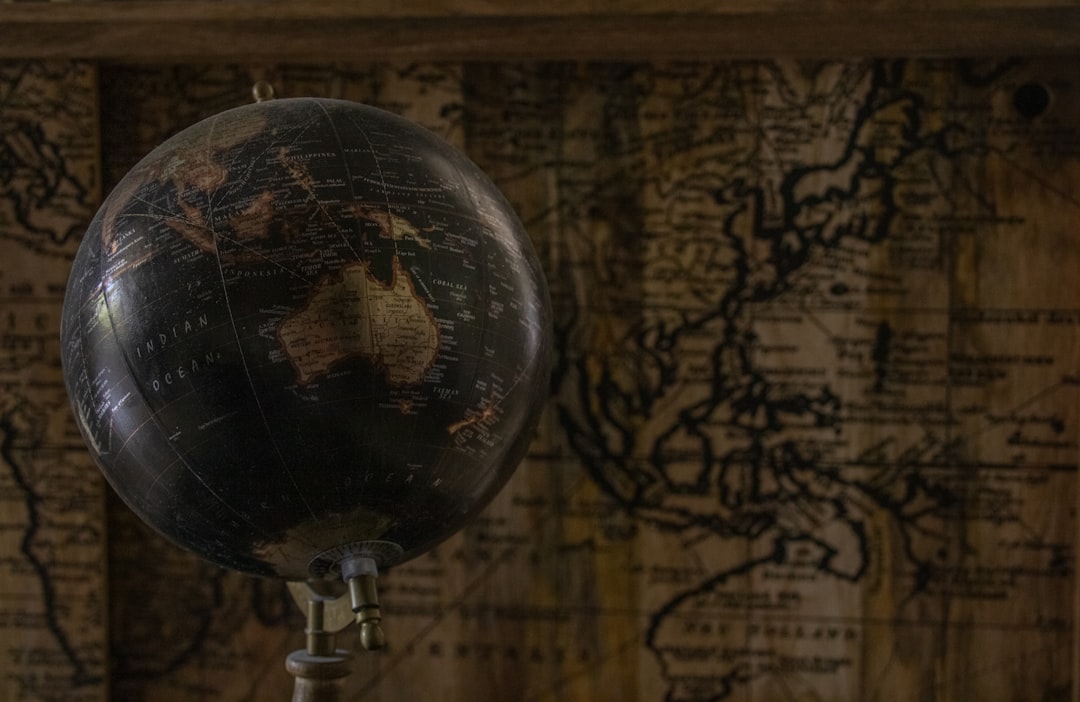The Drake Passage, a body of water located between the southern tip of South America and Antarctica, is renowned for its tumultuous seas and unpredictable weather. Stretching approximately 800 kilometers (500 miles) wide, it serves as a critical maritime route for vessels traveling to and from the Antarctic region. Named after the English explorer Sir Francis Drake, who navigated these waters in the late 16th century, the passage is often regarded as one of the most challenging stretches of ocean in the world.
Its unique geographical position allows for the confluence of the Atlantic and Pacific Oceans, creating a dynamic environment that is both fascinating and perilous. The passage is characterized by its deep waters and strong currents, particularly the Antarctic Circumpolar Current, which flows unimpeded around Antarctica. This current contributes to the Drake Passage’s notorious reputation for rough seas and high winds, making it a formidable challenge for sailors.
The combination of these natural elements not only shapes the physical landscape of the passage but also influences the ecological systems within it. Marine life thrives in these nutrient-rich waters, attracting a variety of species, including whales, seals, and seabirds, which further enhances the passage’s significance in both ecological and navigational contexts.
Key Takeaways
- The Drake Passage is a body of water between South America’s Cape Horn and the South Shetland Islands of Antarctica.
- The significance of the Drake Passage in the Vendee Globe lies in its challenging and unpredictable conditions, making it a crucial and often treacherous part of the race.
- Navigating the Drake Passage presents challenges such as strong winds, high waves, icebergs, and rapidly changing weather conditions.
- Strategies for navigating the Drake Passage include careful route planning, staying updated on weather forecasts, and having a well-prepared and experienced crew.
- Weather patterns in the Drake Passage are characterized by strong westerly winds, frequent storms, and the potential for extreme cold temperatures and rough seas.
The significance of the Drake Passage in the Vendee Globe
The Vendee Globe, a solo round-the-world yacht race, is one of the most prestigious events in the sailing world. The Drake Passage plays a pivotal role in this grueling competition, serving as a critical juncture for sailors as they transition from the Atlantic to the Southern Ocean. For participants, navigating this passage is not merely a logistical challenge; it is a test of skill, endurance, and strategy.
The passage’s unpredictable conditions can significantly impact race outcomes, making it a focal point for both competitors and spectators alike. Sailors must approach the Drake Passage with a deep understanding of its complexities. The passage often serves as a litmus test for a sailor’s ability to adapt to rapidly changing weather conditions and to make quick decisions under pressure.
Successfully navigating this stretch can provide a competitive advantage, while failure to do so can lead to disqualification or even abandonment of the race. As such, the Drake Passage is not just a geographical feature; it embodies the spirit of adventure and resilience that defines the Vendee Globe.
Challenges of navigating the Drake Passage

Navigating the Drake Passage presents numerous challenges that can test even the most experienced sailors. One of the primary difficulties lies in its notorious weather patterns, which can shift dramatically within a matter of hours. Sailors often encounter fierce winds that can reach speeds of over 60 knots, coupled with towering waves that can exceed 10 meters in height.
These conditions create an environment where maintaining control of a vessel becomes increasingly difficult, requiring sailors to possess not only technical sailing skills but also an acute awareness of their surroundings. In addition to the weather, the Drake Passage is also known for its strong currents and unpredictable swells. The convergence of different oceanic currents can create chaotic sea conditions that are difficult to predict.
Sailors must be adept at reading these currents and adjusting their course accordingly to avoid being caught in dangerous situations. Furthermore, the isolation of the passage means that assistance is often far away, adding an additional layer of risk to any miscalculation or equipment failure.
Strategies for navigating the Drake Passage
| Strategy | Description |
|---|---|
| Choosing the right time | Selecting the best season to navigate the Drake Passage with calmer weather conditions. |
| Route planning | Mapping out the most efficient and safe route to navigate through the Drake Passage. |
| Weather monitoring | Constantly monitoring weather forecasts to anticipate and avoid severe storms. |
| Experienced crew | Hiring a skilled and experienced crew familiar with navigating challenging waters. |
| Emergency preparedness | Having a well-equipped vessel and emergency plans in place for any unexpected situations. |
To successfully navigate the Drake Passage, sailors employ various strategies that combine experience, knowledge, and intuition. One key approach involves meticulous planning and preparation before entering the passage. This includes studying weather forecasts and oceanographic data to identify optimal windows for crossing.
Sailors often wait for favorable conditions to minimize risks, demonstrating patience and strategic foresight. Once in the passage, sailors must remain vigilant and adaptable. Continuous monitoring of weather changes and sea conditions is essential for making real-time adjustments to their course.
Many experienced sailors recommend using advanced navigation tools and technology to aid in decision-making. Additionally, maintaining open communication with other vessels can provide valuable insights into current conditions and potential hazards ahead.
Weather patterns and conditions in the Drake Passage
The weather patterns in the Drake Passage are notoriously volatile, influenced by a variety of factors including geography, ocean currents, and atmospheric conditions. The region is known for its frequent storms and rapidly changing weather systems, which can create hazardous sailing conditions at any time of year. Sailors must be prepared for everything from calm seas to violent gales within a single day.
These winds can create choppy seas and unpredictable swells that pose challenges for navigation. Additionally, fog and low visibility can complicate matters further, making it difficult for sailors to spot other vessels or navigate safely through treacherous waters.
Understanding these weather patterns is crucial for anyone attempting to cross this formidable passage.
Safety measures for navigating the Drake Passage

Given the inherent dangers associated with navigating the Drake Passage, safety measures are paramount for sailors undertaking this journey. One of the most critical aspects of safety is ensuring that all equipment is in optimal working condition before entering the passage. This includes checking sails, rigging, and safety gear such as life jackets and emergency beacons.
In addition to equipment checks, sailors are encouraged to develop comprehensive safety plans that outline procedures for various emergency scenarios. This may include establishing communication protocols with support teams on land or other vessels in the area. Furthermore, many sailors choose to travel in groups or pairs when crossing the Drake Passage to enhance safety through mutual support and shared resources.
Equipment and technology for navigating the Drake Passage
The right equipment and technology play a vital role in successfully navigating the Drake Passage. Modern sailing vessels are often equipped with advanced navigation systems that provide real-time data on weather conditions, sea currents, and potential hazards. These tools enable sailors to make informed decisions about their course and speed while minimizing risks associated with unpredictable conditions.
In addition to navigation technology, safety equipment is essential for any sailor venturing into the Drake Passage. This includes life rafts, emergency beacons, and first aid kits that are easily accessible in case of emergencies. Many sailors also invest in high-quality communication devices that allow them to stay connected with support teams or other vessels during their journey.
The combination of reliable equipment and cutting-edge technology enhances both safety and performance in this challenging environment.
Mental and physical preparation for navigating the Drake Passage
Mental and physical preparation is crucial for sailors preparing to navigate the Drake Passage. The psychological demands of sailing through such treacherous waters can be immense; sailors must cultivate resilience and adaptability to cope with stressors such as isolation, fatigue, and uncertainty.
Physical fitness is equally important when preparing for this demanding journey. Sailors must maintain their strength and endurance to handle physically taxing tasks such as sail trimming or maneuvering their vessels in rough seas. Regular exercise routines that emphasize cardiovascular fitness, strength training, and flexibility can help sailors build the stamina needed for long hours at sea.
By prioritizing both mental and physical preparation, sailors can enhance their chances of successfully navigating the challenges posed by the Drake Passage.
Historical incidents and famous voyages through the Drake Passage
The history of exploration through the Drake Passage is rich with tales of adventure, bravery, and tragedy. One notable incident occurred during Sir Francis Drake’s expedition in 1578 when he became one of the first Europeans to navigate these waters. His journey not only contributed to our understanding of this challenging passage but also paved the way for future explorers seeking new trade routes.
In more recent history, numerous sailing expeditions have faced perilous conditions while traversing the Drake Passage. The tragic sinking of several vessels serves as a stark reminder of the dangers inherent in these waters. These historical incidents highlight not only the risks associated with navigation but also underscore humanity’s enduring fascination with exploration and adventure in one of nature’s most formidable environments.
Environmental concerns in the Drake Passage
The ecological significance of the Drake Passage cannot be overstated; it serves as a vital habitat for numerous marine species while also playing a crucial role in global ocean circulation patterns. However, environmental concerns have emerged as human activity increasingly impacts this delicate ecosystem. Climate change poses significant threats to marine life in the region, leading to shifts in species distribution and changes in food availability.
Additionally, increased shipping traffic through the passage raises concerns about pollution and potential oil spills that could devastate local ecosystems. Conservation efforts are essential to protect this unique environment from further degradation while promoting sustainable practices among those who navigate its waters. By raising awareness about these environmental issues, stakeholders can work together to ensure that future generations can continue to appreciate and explore this remarkable region.
Tips for spectators and supporters of Vendee Globe sailors navigating the Drake Passage
For spectators and supporters following Vendee Globe sailors as they navigate the challenging waters of the Drake Passage, there are several ways to engage meaningfully with this thrilling event. First and foremost, staying informed about race updates through official channels can enhance understanding of each sailor’s journey through this formidable passage. Live tracking technology allows fans to monitor their favorite competitors’ progress in real-time while gaining insights into their strategies.
Additionally, engaging with online communities dedicated to sailing enthusiasts can foster camaraderie among supporters while providing opportunities for discussion about tactics used during navigation through challenging waters like those found in the Drake Passage. Sharing experiences or insights from past voyages can enrich conversations surrounding this iconic race while celebrating both individual achievements and collective passion for sailing adventures on an international stage. In conclusion, navigating the Drake Passage presents an array of challenges that require careful preparation, strategic thinking, and an understanding of environmental factors at play within this unique maritime region.
As part of events like the Vendee Globe, it serves not only as a test of skill but also as a reminder of humanity’s enduring spirit of exploration amidst nature’s formidable forces.
The Drake Passage is a notorious stretch of water that challenges even the most seasoned sailors, making it a significant hurdle in the Vendée Globe, a solo non-stop round-the-world yacht race. This treacherous passage is known for its unpredictable weather and rough seas, testing the endurance and skill of the competitors. For those interested in learning more about the geographical and historical significance of the Drake Passage, an insightful article can be found on MyGeoQuest. This resource delves into the unique challenges posed by this part of the world, providing a deeper understanding of why it is such a formidable part of the Vendée Globe. For more information, you can read the article on MyGeoQuest.
WATCH NOW! Drake Passage: Earth’s Deadliest Waters Revealed
FAQs
What is the Drake Passage?
The Drake Passage is the body of water between the southern tip of South America and the northern tip of the Antarctic Peninsula. It is known for its rough seas and challenging sailing conditions.
What is the Vendee Globe?
The Vendee Globe is a solo, non-stop, around-the-world sailing race that takes place every four years. It is considered one of the most challenging and prestigious sailing events in the world.
How does the Drake Passage relate to the Vendee Globe?
During the Vendee Globe, sailors must navigate the treacherous waters of the Drake Passage as they make their way around the world. The passage is known for its strong winds, large waves, and unpredictable weather, making it a significant challenge for Vendee Globe competitors.
What are the dangers of sailing through the Drake Passage?
Sailing through the Drake Passage presents numerous dangers, including extreme weather conditions, icebergs, and strong currents. The combination of these factors makes it one of the most challenging and dangerous stretches of water for sailors to navigate.
How do sailors prepare for the Drake Passage during the Vendee Globe?
Sailors participating in the Vendee Globe undergo extensive training and preparation to navigate the Drake Passage. They must be skilled in handling their boats in extreme conditions and be prepared for the physical and mental challenges they will face during this part of the race.
